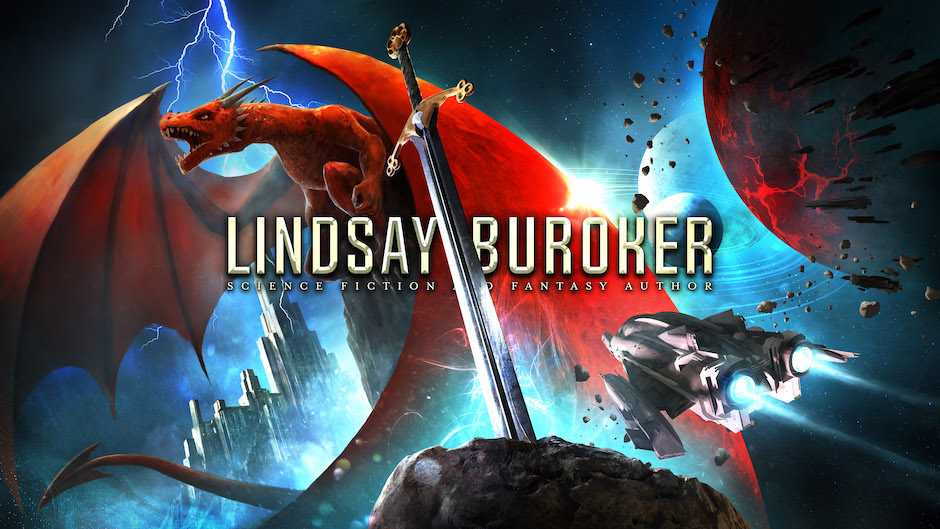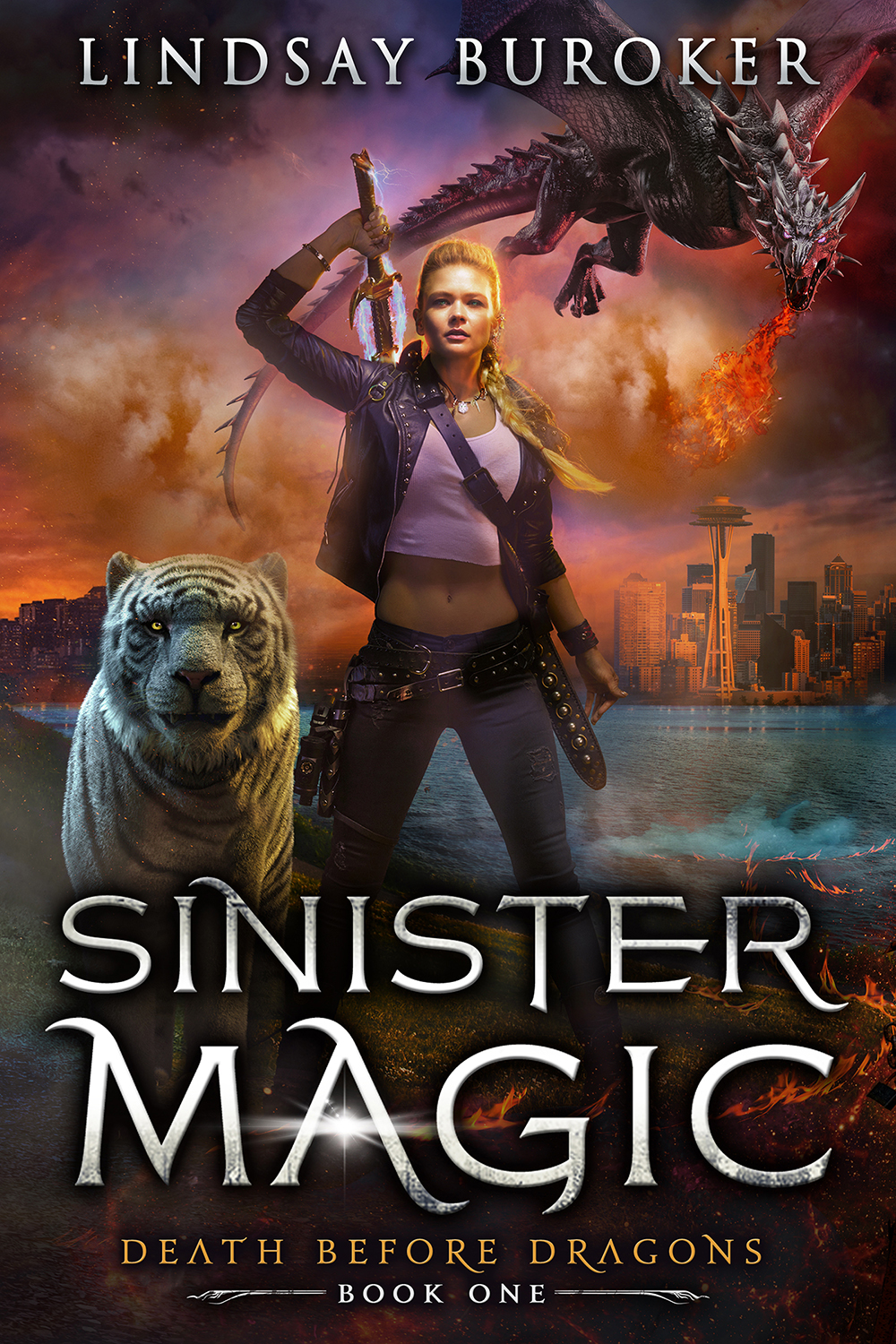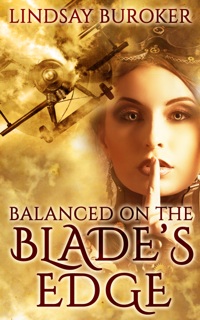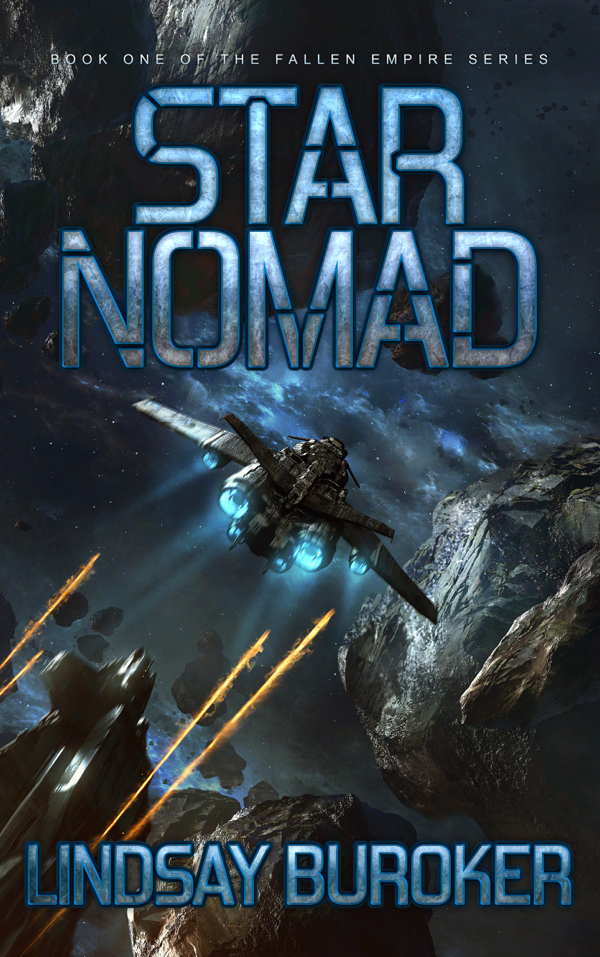As many of you know, I ran a Kickstarter campaign a few months ago, hoping to raise the funds to pay for the creation of the third Emperor’s Edge audiobook. With the help of many generous folks, I raised about $6,000, enough to pay for EE3 (in production now) and EE4, as well as covering the costs of creating a paperback version of Encrypted. Not too shabby, but not quite as mind-blowing as the $90,000+ that Jordan Stratford raised for his steampunk novel. Not only did he gather all the start-up money he needed and more, but his success earned him a contract with a major literary agency and interest from every one of the Big 6 publishers.
Jordan agreed to an interview today, to share some of his Kickstarter success tips, so without further introduction…
Interview with Steampunk author, Jordan Stratford
LB: Would you like to start out telling us a bit about your project and why you looked to Kickstarter?
JS: I’m a screenwriter by trade, and I originally conceived of the project as an animated television series. After I’d written my first novel (“Mechanicals”, an occult steampunk version of the Crimean War), I was looking for the next long-fiction project and settled on a novelization of my Wollstonecraft concept: in a nutshell, it’s Ada Lovelace (the first computer programmer) and Mary Shelley (the first science fiction writer) as 11 and 14 year old girls in 1826 London who open a detective agency, solving crimes from 19th century fiction. I hadn’t done much with it as a TV treatment, so I thought I’d do it as a book series.
My business model was to self-publish and generate steady but modest revenue from the series for the next 3-5 years. I thought of kickstarter as a way of proving the concept, building the audience, and offsetting a portion of the start-up costs; editing, illustration, website, and publicity. But mostly it was about connecting with potential fans.
The project raised $91,751 in 27 days, landed me a contract with a major literary agency, and yielded offers from every one of the Big 6.
LB: I’ve seen some insanely successful Kickstarter campaigns, but they’re usually from artists/authors who have built up a huge fan-base beforehand. You don’t seem to have that huge of an online following (at least from what I see on your blog and Twitter). What was the key to your success?
JS: My follower/friend numbers weren’t huge, but because my wife and I produced the first steampunk show in Canada, we had a terrific network of influencers. We’d invested in these relationships over the years, supporting artists and promoting friends, so it was quite organic. While not blatantly steampunk, Wollstonecraft has enough steampunk elements in it to appeal to that audience, and that was really the stone in the water. We had a defined genre and significant relationships in that genre. The first step in crowd-funding is to start with a great crowd.
I’d like to add that as a Canadian, I can’t produce my own kickstarter campaign. So I turned to my American friend Kevin of Airship Ambassador, a steampunk blog, for assistance. It was the only way to get the project off the ground. But that’s step one, isn’t it? Find out where your gaps are, and ask for help.
LB: I know your project hit the Kickstarter front page and was covered by many big blogs (io9, wired, boingboing, etc.), but how did you gather that initial momentum that convinced the various media outlets that your project was newsworthy?
JS: An artist friend of mine had had some previous coverage in boingboing, and he mentioned me to Cory Doctorow, who gave the project a plug. After that I became nerd-famous pretty much by accident. The biggest difference financially was the kickstarter newsletter, and that was simply because they liked the idea.
LB: In your Tips for a Successful Kickstarter Campaign article (great post!), you mentioned people should “Position the goal of the campaign as ‘funding for the OTHER people needed to make it happen’, not funding for you personally. Campaigns which do very well are those which seek to pay for printing, or a film crew, etc. Backers understand this kind of financial reality, but are less willing to let you quit your day job with the proceeds of the campaign.”
Do you think that’s set in stone? The first hundred people who donated to your campaign knew they were paying for your editor, illustrator, etc., but after you smashed your initial goal, folks had to be donating for other reasons. I ask because I’m curious about the viability of using a donation model to put one’s work out for free. Could Kickstarter be an alternative to the traditional publishing paradigm?
JS: No, I don’t think it’s set in stone, it’s just an observation from looking at literally hundreds of campaigns. It’s a generalization. Nobody expects Pebble to build all those watches in their spare time. Shadowrun is obviously a full-time gig for a whole lot of people.
Once we had exceeded ten times our initial goal, it was obvious that the world we were creating together was growing well beyond the original scope, and that entailed infrastructure – more people, more partners, more planning time. And of course smart acquisitions editors are looking at kickstarter, and I was approached mid-campaign by every major publisher, film studios, merchandising license firms. It was obvious that the characters and scenario were resonating with the audience, and solving a problem: the lack of pro-science role models for middle grade girls. I got an amazing letter from an engineering student who said she wanted a copy of the book and a time machine so she could give it to her ten-year-old self.
Kickstarter isn’t just about the money: it’s about the community and their ideas, and it’s about market-testing. I essentially pre-sold close to 10,000 books in the series, which proves a market. As the campaign continued to grow, I reached out to my supporters and said “what would you like to see?” and the answer was more books, free short stories, resources for teachers and home-schoolers, interactive fiction, translation… all kinds of fun stuff. But those stretch-goals came from the community.
As for publishing: I think the “traditional paradigm” is a myth. Each book has always needed its own plan, its own team, its own audience. Publishers – Big 6 or indie – aren’t sausage factories. We just have more options now, more tools in the drawer. Kickstarter is one of those tools – for covering start-up cost as well as sending the canary down the coal-mine, so to speak.
What has changed is the sequence: build a product on spec, submit to a hundred agents and wait, submit to a hundred publishers and wait, then hope to find an audience. That’s over. It’s not the creator’s job to ask the distributors for permission anymore. The creator connects to the audience, and the distributors now have to sell the creator on the benefits of a partnership. And the benefits are significant. But agents and publishers hunt for authors now, not the other way ’round.
LB: Such awesome advice, Jordan!
Okay, last question: would you tell us how crucial the video was to your success? You talked about the book, but you also talked about your daughter and how you wanted to give her (and other girls) adventures featuring smart female role models that might impart a love of science and math to kids. I can see where this would appeal to folks much more than simply talking about the project. Thoughts?
I think it was just about being honest. I love these characters. I’m inspired by my daughter and her friends, I’m in awe of how curious and connected they are. They’re unapologetically scientists, creators, explorers, inventors, pokers-of-dead-things-with-sticks. It’s crucial to me that we retain that curiosity and engagement. Girl-brain is probably the most under-utilized resource on the planet, and it can change the world – just like Ada and Mary did. So I just spelled that out: This matters to me, and I’m doing it. If it matters to you too, let’s do it together. It’s that simple.
~
Thanks, Jordan. This is such an inspiring interview! Readers, for more information on Jordan’s projects, you can check out his blog. The site devoted to his book http://worldofwollstonecraft.com will have (at least) a placeholder and mailing-list sign-up by mid-July.




What an inspiration, both in terms of writing and providing positive role models for girls. Kudos to Mr. Stratford for his forward-thinking abilities, and to Lindsay for another great interview!
Wow. Sounds like a great project, too.
Wow, I’ve supported people a number of times on Kickstarter, but I never would have guessed that publishers are paying attention to what’s going on in there. I wonder how many backers you have to get to win their attention.
Congratulations on your success, Mr. Stratford. I’ll look for your book when it comes out.
Wow, very cool. I wonder why you needed a publisher, though, if you were doing so well with your own efforts? I’m not trying to be flip, I am genuinely curious as to the benefits of going with a big publisher instead of doing your own thing.
Thank you, and that’s a good question, Margaret.
Right now my agent is just talking to the numerous entities which expressed an interest in the project. Obviously an international house can get me in places I can’t get solo, such as bookstores in foreign markets. This particular series probably (but not definitely) will do better with a predominantly-print strategy, in partnership with a player who already has invested in that space. So I’m just hearing what they have to say, and will make a business decision that allows me to fulfill my obligations to my backers.
For other projects, who knows? Each title has its own business plan, and I’m learning so much about different options in distribution and rights – it’s a rapidly shifting field of information. So this series might sit with Publisher X, and the next series might sell out of the back of my car at flea markets. The beauty of the situation is that I’m free to experiment, so long as I’m accountable to the community that saw in the project the same thing I did.
Maybe I work with a bigger publisher on this series, which could greatly expand my audience, and then I self- or indie- the next by leveraging that attention? I owe it to the project and to the backers to make as large an impact as I can.
Having an agent means I can defer all the initial stuff, and rely on her expertise and judgment, so I can be presented with the best options at the end of many many marathon phone calls that would take me away from the manuscript(s). My priority is writing at this stage, and that’s wonderfully liberating.
We shall see. It’s all unfolding, and as a community of authors we’re all learning from each other. I love that.
I think you’re smart to consider a publisher for this project, Jordan. Because of e-publishing, it’s a wonderful time to self-publish if you’re selling to a market that has e-readers and shops online. That’s not really the case for middle-grade and younger YA fiction. The big publishers still seem to be the best bet for titles that will predominantly sell in print.
Another amazing story! I’ve seen a few people creating Kickstarter campaigns for their novels, but couldn’t figure out how it would ever work. Well, I guess I was wrong! Good luck, and what a fascinating concept. I think it’s the originality of the idea that drew many, particularly the attention of agents and publishers – though of course, having thousands of fans before the thing is even written can’t be a bad thing either :0)
Tony
Congratulations. It looks like it was a good project + who you knew. A lot of bloggers watch boingboing so I’m sure that was a huge help.
Wow! Thanks so much for posting this! This is really encouraging and inspiring! Congratulations to both of you (Jordan and Lindsay) for your great success. It’s really encouraging to see talented writers achieve so much. Good luck to you with your future projects:)
Pingback: Writing Blog Treasures 7~14 | Gene Lempp ~ Writer
I’d like to take this opportunity to clarify: in publishing there are multiple and layered stages of engagement. What I got from the campaign itself were firstly *inquiries* and then *expressions of interest* and then offers to read or assist. These are not the same as offers for sale of rights. From what I can tell, this latter bit involves a lot of people having lunch with other people over a protracted period of time, and like any enterprise has its own forms, customs, secret handshakes, vocabulary, “inside baseball”, and possibly some kind of unique and significant headgear, such as a fez. I’m only guessing about that last bit.
Anyway I wouldn’t want to give the impression that a horde of acquisition agents all got on a plane from New York to drop off hockey bags full of krugerands on my doorstep. Because they didn’t. Presumably because of DHS and TSA or perhaps such things would be very heavy to lift, and I have a long, rural driveway. That must be it.
Anyway, thank you for the opportunity to clarify.